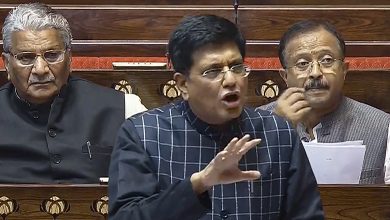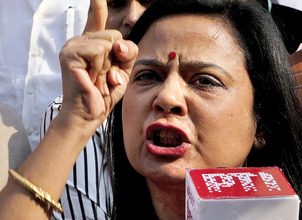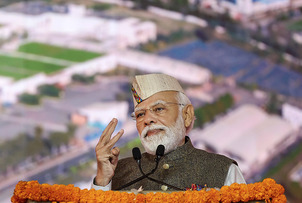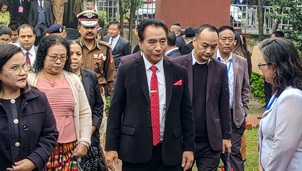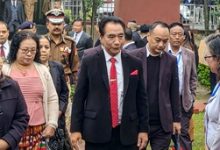From Gaza to Chile, Biennale asks how we will live together

Venice, May 21 (AP):
In the time it has taken to prepare for the Venice Biennale, violence in the Middle East has overtaken a Palestinian family farm in Gaza featured in one of the exhibits. It gives real-time urgency to the question posed by the Biennale curator: ‘How will we live together?’
The 17th International Architecture Exhibition opens Saturday after a one-year pandemic delay, during which time architecture has emerged as one of the key disciplines in the global coronavirus response. One exhibit ‘Border Ecologies and the Gaza Strip,’ looks at how Israeli control of the border impacts the Qudaih family farm in the Gaza village of Khuza’a.
It recounts, for example, that 20 of the Qudaih family’s olive trees were bulldozed to create a buffer zone, and a greenhouse necessary to grow tomatoes has been repeatedly destroyed.
Since 2014, the village had been ‘more or less’ quiet, said curator Malkit Shoshan. But as she prepared for the Biennale opening, violence erupted anew.
The farm, near the border fence, has been destroyed by bombs and the family is sheltering in their home, which has been damaged by shells, about a mile away, said one of the sons, Amir Qudaih, who lives in the United States and who helped put the exhibit together.
Qudaih, a 27-year-old recent engineering graduate, was supposed to be in Venice for the opening. But he said he is too anguished by the bombing and uncertainty over his family’s safety to travel. Communications are spotty due to interruptions in electricity and the internet, and his last contact was earlier in the week.
‘My family cannot access the farm anymore because it is very close to the border and no one can leave the house.
They are running out of the food,’ which mostly comes from the farm, Qudaih said by phone. ‘Every time I text them or call them, it could be the last call because things are happening 24/7 there. It is very stressful.’
Not every exhibit in Biennale carries the same immediacy, but the issues driving it are fundamental to shared existence, also with other species.
The event curated by Hashim Sarkis also examines how architecture can address other global issues, ones that helped him formulate the title question well before the pandemic: climate change, political polarization, increasing inequalities and population displacement.
Exhibits look at how climate change and an international presence is affecting Antarctica; illustrate how global warming endangers sea life and how rising seas may be left as hollow spaces without life; and trace the architecture of man-made infrastructure on the outside of a globe, while making a more utopian proposal on the inside of how it might look under a regime of strategic preservation.
The strongest lens for this Biennale, though, is the pandemic.


